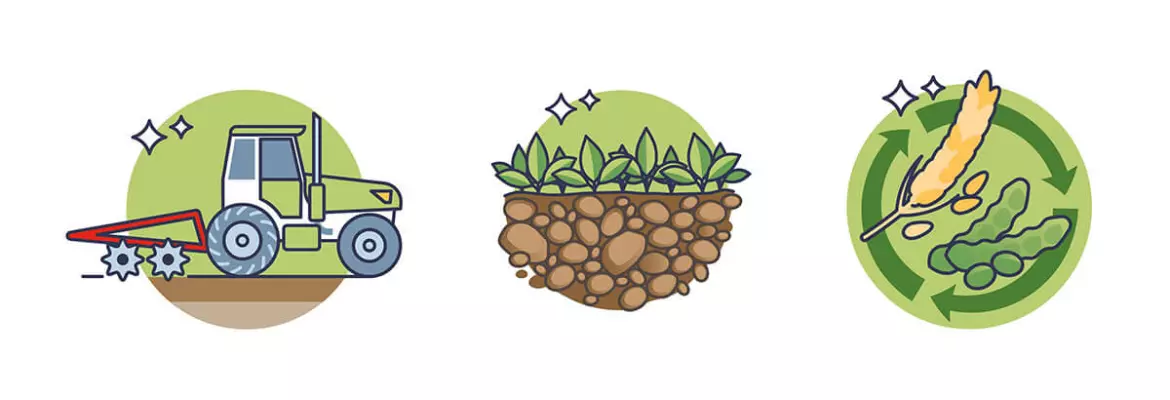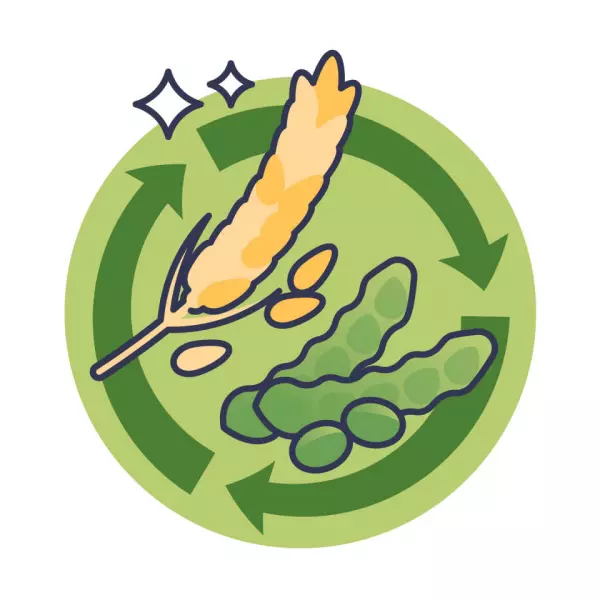
cover crop

Conservation agriculture consists of a number of agricultural techniques intended to improve soil structure and fertility. The techniques are based on three pillars, or major agronomic principles: minimum soil disturbance, permanent organic soil cover, and crop rotation. A review of these fundamental principles.
One of the pillars of conservation agriculture (CA) is minimum soil disturbance. Deep mechanical tillage techniques are prohibited for seedbed preparation. According to the FAO (United Nations Food and Agriculture Organisation), the soil disturbance area must be kept to a minimum: less than 15 cm wide or less than 25% of the worked area. Direct drilling is one of the most commonly used techniques. Strip-till is also possible.
The advantages of this principle are:
Over the long term, yield increases while fertiliser input decreases.
The second pillar of conservation agriculture is planting cover crops. Maintaining permanent soil cover all year round is recommended. CA prohibits bare soil which is subject to erosion. The FAO highlights 3 categories of ground cover: 30-60%, 60-90%, and more than 90%. If the farm cannot cover 30% of fields, it is not considered to be practising conservation agriculture.
Organic cover can be intercrops, i.e. planted between two cash crops of any type: regrowth, planted cereals, legumes, or even mulch. Mulch, which can be decomposing leaves, bark, or compost, is spread over the field. Most commonly, mulch or residues from crops is used, often shredded, for better decomposition.
The advantages of this principle are:

cover crop

crop rotation
The final principle is species diversification. In practice, it means crop rotation. In general, 3 species are recommended, but the rotations are often longer in conservation agriculture. Alternating between different crop families is recommended, such as cereals, legumes, and crucifers. It can be done with cash crops, but it is also essential to alternate cash crop families with intercrop species.
The advantages of this principle are:
Sources:
https://www.fao.org/conservation-agriculture/overview/conservation-agriculture-principles/en/
https://openknowledge.fao.org/server/api/core/bitstreams/b97a602f-3ea8-426c-9be2-a3825e783a08/content
